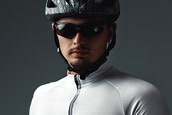
The results of the 2014 Premium LensMarketPulse Survey are in, and as in previous years, there’s a lot to ponder. Judging from the topline results below, the spectacle lens market is robust. More than half of the survey respondents, all independent eyecare professionals reported that sales of spectacle lenses and treatments accounted for a bigger piece of their revenue than in 2011. The average price of a lens-only package rose to $254.71, up from $248.46 in 2013.
Another positive sign is the increase in sales of some types of premium lenses. These include relatively new market entries such as digital single vision lenses and lenses that block UV and HEV light. In fact, 60 percent of respondents said they have increased discussions with their patients on the importance of UV and HEV-absorbing eyewear for outdoor use, and 46 percent have actually written more Rxs for them in the last three years. That’s impressive, especially for a product category that has only recently emerged.
Sales of personalized progressive lenses remained a solid 36 percent this year, the same as in 2013. I suspect sales of both digital progressive and digital single vision lenses are strong because more dispensers reported that they are taking actual vertex, tilt and wrap measurements. Forty-two percent of retailers said that they have a digital measuring device in their office; 49 percent of them say they use it 75 percent to 100 percent of the time.
These are just a few highlights of the survey. I encourage you to look over the survey data and see how it compares to your store or dispensary. To obtain the complete report, contact senior research analyst Jennifer Waller at [email protected] or visit jobsonresearch.com.
—Andrew Karp
TOTAL SALES
Compared to three years ago, 57 percent of retailers said that spectacle lenses and treatments made up a larger percentage of their location’s total gross dollar sales in 2014. In 2014, 45 percent said pricing on spectacle lenses and treatments has increased compared to three years ago as well, and 52 percent said that Rx sun lenses as a percentage of total dollar sales increased over the same period.
LENS SALES
When asked to rank lens design by popularity, standard or aspheric single vision was ranked most popular by 50 percent of retailers. Customized or personalized progressives were ranked most popular by 23 percent, and standard progressives were ranked most popular by 17 percent.
Less than half of retailers (38 percent) said less than 3 percent of single vision Rxs sold are digitally enhanced. This compares to 51 percent last year, signifying notable growth in digital enhanced single vision Rxs sold.
Two-thirds (63 percent) of single vision digitally enhanced lenses use actual vertex, tilts and wrap measurements done in the office by the retailer. More than two-thirds (68 percent) of retailers said that customized or personalized progressives lenses made up a greater proportion of their total lens sales in 2014 than they had versus three years ago. Comparatively, 29 percent said standard progressive sales had increased over the last three years, while 27 percent said that sales of bifocals and trifocals had decreased as a percentage of total lens sales over the last three years, respectively. Eighty-two percent prefer lens manufacturer brands over lab private labels for digital progressive lenses.
COMPUTER/OFFICE LENSES
Most retailers surveyed (67 percent) say that most computer/office lenses patients/customers buy by occupation/vocation as opposed to by add power.
LENS MATERIALS
When asked to rank lens material by popularity, polycarbonate was ranked most popular by 43 percent of the retailers. Standard plastic was ranked most popular by 34 percent. Tribrid was ranked least popular by the most retailers (54 percent).
Forty-nine percent of retailers said that their 2014 super high-index lens sales increased as a proportion of total lens pair sales compared to 2013. Fifty-one percent and 41 percent said the same about their polycarbonate lenses and Trivex lenses, respectively. Sixty-three percent said that their mid-index lens sales had stayed flat.
LENS TREATMENTS
Sixty-three percent of retailers said they offer a new AR lens that also reduced blue light. They say it has replaced, on average, 22 percent of standard AR.
IMPACT OF REFRACTIVE SURGERY
Forty-two percent of retailers agree that because of the increase in patients having refractive surgery, their sales of reading glasses have increased, while 26 percent say specifically high-powered lens sales have decreased. Fifty-seven percent, however, say sales have not been affected at all.
PERSONALIZED PROGRESSIVES
Retailers said that 36 percent of their progressive lens sales are personalized. One-quarter (25 percent) of the progressive lenses with personalized designs include actual vertex, tilt and wrap measurements. Half (49 percent) use the manufacturer’s or lab’s default measurements.
Methodology
This sample was derived from the proprietary Jobson Optical Research database. This survey was conducted by Jobson Optical Research’s in-house research staff. Data collection was conducted in February/March 2015. Only the responses of independent optical retailers are included in the report. The 2015 sample consists of 205 independent optical retailers. All participants were recruited by e-mail, and the questionnaire was completed online. Three years of data is provided for comparisons where possible.
—Jennifer Waller, Senior Research Analyst
Forty-two percent of retailers said that they have a digital measuring device in their office. Among them, 49 percent say they use it 75 percent to 100 percent of the time. Most (56 percent) are tablet-based.
LENS PACKAGES
Fifty-one percent of retailers say they use package pricing. The average price of a lens-only package was $254.71.
OUTDOOR EYEWEAR
Sixty percent said they have increased discussions with their patients on the importance of UV and HEV-absorbing eyewear for outdoor use, and 46 percent have actually written more Rxs for them in the last three years.
Fifty-five percent said they have increased discussions with their patients on the importance of children’s outdoor eyewear/sunwear, and 38 percent have actually written more Rxs for them in the last three years.■






















